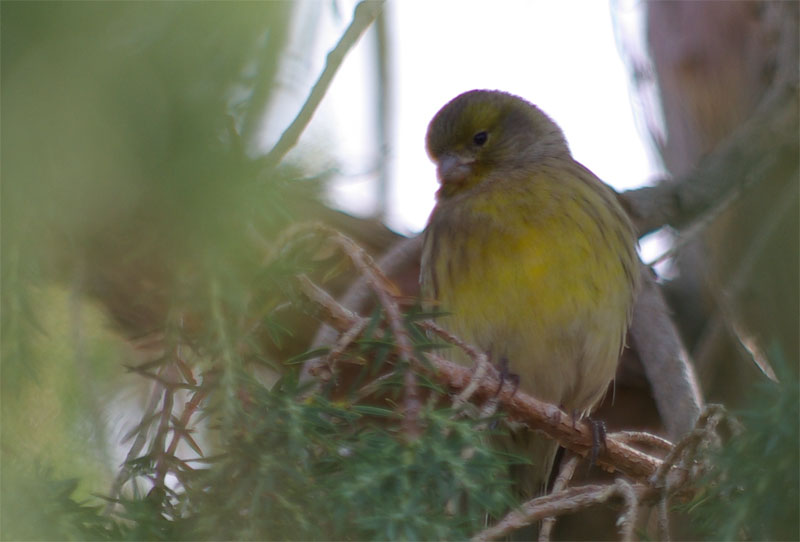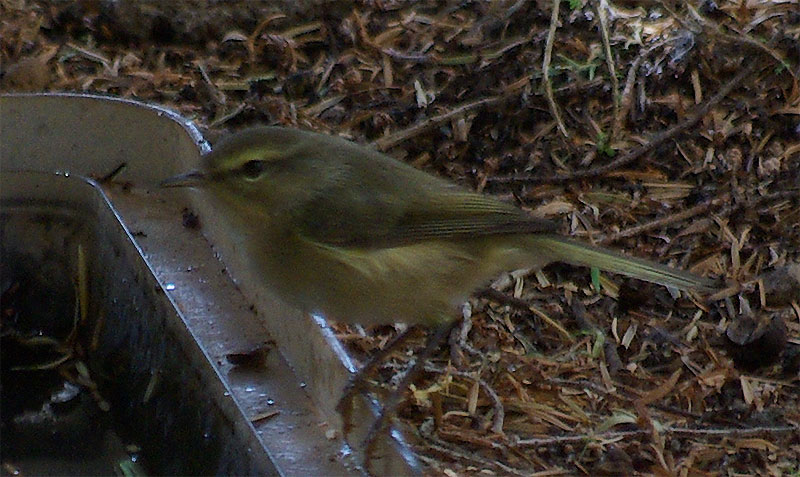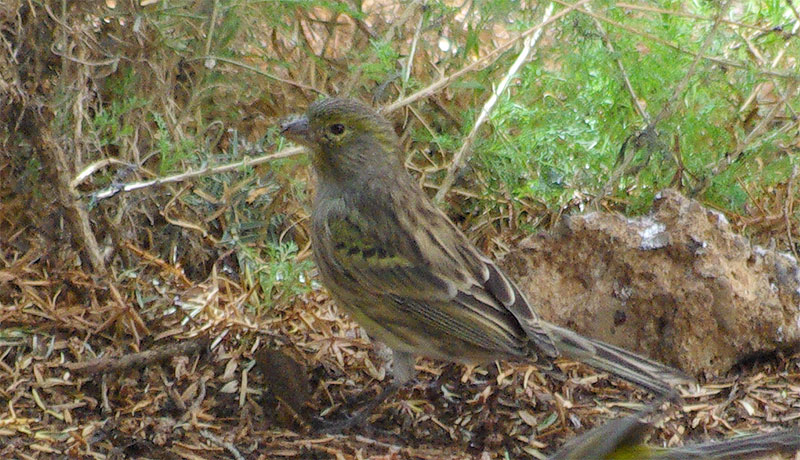
For some time I’ve been trying to identify the birds twittering in a Canary Islands juniper tree (Juniperus cedrus) at the Roque. It’s been frustrating because although you can frequently hear a whole flock of them twittering, they tend to stay deep inside the tree and it’s very hard to catch a glimpse of one. It’s even harder to get a photograph in order to identify them.

As you can see, I finally succeeded. They’re wild canaries, Serinus canaria. They’re much less brightly coloured than domestic canaries. If they were the same vivid yellow as the caged birds, I think we’d see fewer canaries and fatter kestrels.
The Canary Islands aren’t named after the birds; it’s the other way around. The islands are named for the Latin for “islands of dogs” canariae insulae, and the birds are named after the islands.


Hi Sheila, yes the wild canary is closely related to the Serin (common in mainland Spain). The third one is a juvenile, the first one doesn’t seem to have enough yellow to be a male – it should extend underneath onto the belly too – but slao looks atypical for the female – but maybe there is local variation between the islands?
The third one looks to me more like a willow warbler or a chiffchaff than a female canary! Those two are hard to distinguish visually – easier by voice. And I’m not sure which is more likely there around El Roque